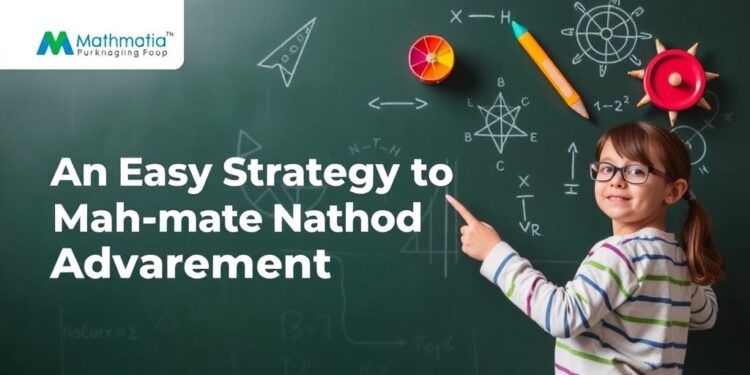American education has witnessed persistent challenges in mathematics achievement, especially when contrasting its students with peers from other developed nations. For decades, test scores have positioned American students in the bottom 25% globally, highlighting a significant gap in educational effectiveness. This troubling trend has only been exacerbated by the COVID-19 pandemic, which disrupted classroom learning and further widened the chasm in academic performance. As schools contemplate strategies to recover learning loss, research emerging from the University of Pennsylvania presents intriguing insights into how behavioral science can positively influence educational outcomes, particularly in mathematics.
The recent study, published in the Proceedings of the National Academy of Sciences, underscores a promising avenue for improving student math proficiency through behavioral interventions directed at teachers. Researchers from the Behavior Change for Good Initiative, alongside partners from Zearn Math, embarked on a large-scale mega-study to explore how tailored email nudges could uplift student performance in mathematics. While previous efforts have focused on student motivation, this study innovatively pivots towards influencing educator actions.
Interventions founded in behavioral science principles offer innovative insights into how to effectively motivate teachers, thereby impacting their students. Central to this study is the phenomenon of “nudges”—indirect suggestions aimed at influencing the behavior and decision-making of individuals without coercive means. The premise is elegantly simple: if teachers feel more supported and equipped to utilize effective resources in their classrooms, they will likely impart greater benefits to their students’ learning journeys.
Conducted on an expansive scale involving over 140,000 teachers and nearly 3 million elementary students, the research meticulously assessed 15 distinct interventions alongside a standard reminder group. This structure allowed researchers to identify which behavioral nudges led to the most significant improvement in student math outcomes. Among the various interventions, findings revealed that engaging teachers through messages with a personal touch—those that included updates about their own students—produced the most marked benefits.
Results from the study indicated that behaviorally informed email messages improved students’ math progress by approximately 1.89% over a four-week intervention period. Even more striking was the efficacy of the most successful intervention, which increased student achievement by about 5.06%. This specific approach encouraged teachers to log into Zearn Math weekly to receive tailored reports concerning their students’ progress, effectively creating a feedback loop that fostered ongoing engagement and reflection.
Angela Duckworth, a prominent researcher involved in this initiative, pointed out the implications of these findings for education policy and practice. She stated that these low-cost nudges could represent a scalable solution for schools grappling with how to enhance teaching effectiveness. The study suggests that teachers can be nudged into adopting data-driven decision-making processes, leading to improved instruction and consequently, better student outcomes.
However, while the initial findings are promising, the authors caution against interpreting the outcomes as a definitive solution to enduring educational crises. The observed effects, while statistically significant, remain relatively modest, indicating that more intensive and comprehensive support systems may be necessary to achieve substantial improvements in student math achievement. As Katy Milkman, another co-author of the study, noted, transforming entrenched behaviors in educational settings is a formidable challenge, underscoring the complexity of effecting meaningful change.
Moreover, the exploration of personalized nudges raises further questions ripe for investigation. Researchers propose additional studies designed to verify the long-term effects of these behaviorally informed interventions. There is also a growing interest in understanding the mechanisms behind the success of strategies that integrate personal data, particularly how tapping into teachers’ intrinsic motivations can lead to sustainable enhancements in their instructional methods.
In conclusion, the findings from this collaborative effort highlight the potential for behavioral science to inform educational practices in ways that are economically viable and scalable. Inserted within a larger framework of teacher support, these insights may ultimately pave the way for innovative policies that prioritize data-informed instruction. The objective is more than passing tests; it is about fostering an educational ecosystem that encourages excellence in mathematics among students. With a clearer understanding of behavior-driven strategies, stakeholders in education can work to create environments that not only prioritize learning outcomes but also cultivate a culture of continuous improvement among educators.
As policymakers and educational leaders reflect on these findings, the ultimate aim remains crystal clear: to harness behavioral insights that effectively motivate teachers and enrich student learning experiences in mathematics. This approach could serve as a catalyst for wider reforms necessary to uplift American students back into competitive standing with their international counterparts and ensure sustainable educational improvement over the long haul.
Subject of Research: Educational Interventions, Teacher Motivation, Student Achievement in Mathematics
Article Title: A national megastudy shows that email nudges to elementary school teachers boost student math achievement, particularly when personalized
News Publication Date: 24-Mar-2025
Web References: https://www.pnas.org/doi/10.1073/pnas.2418616122
References: Not applicable
Image Credits: Not applicable
Keywords: Education, Behavioral Science, Teacher Interventions, Student Achievement, Mathematics, Nudges, Data-Driven Instruction, Teacher Motivation




